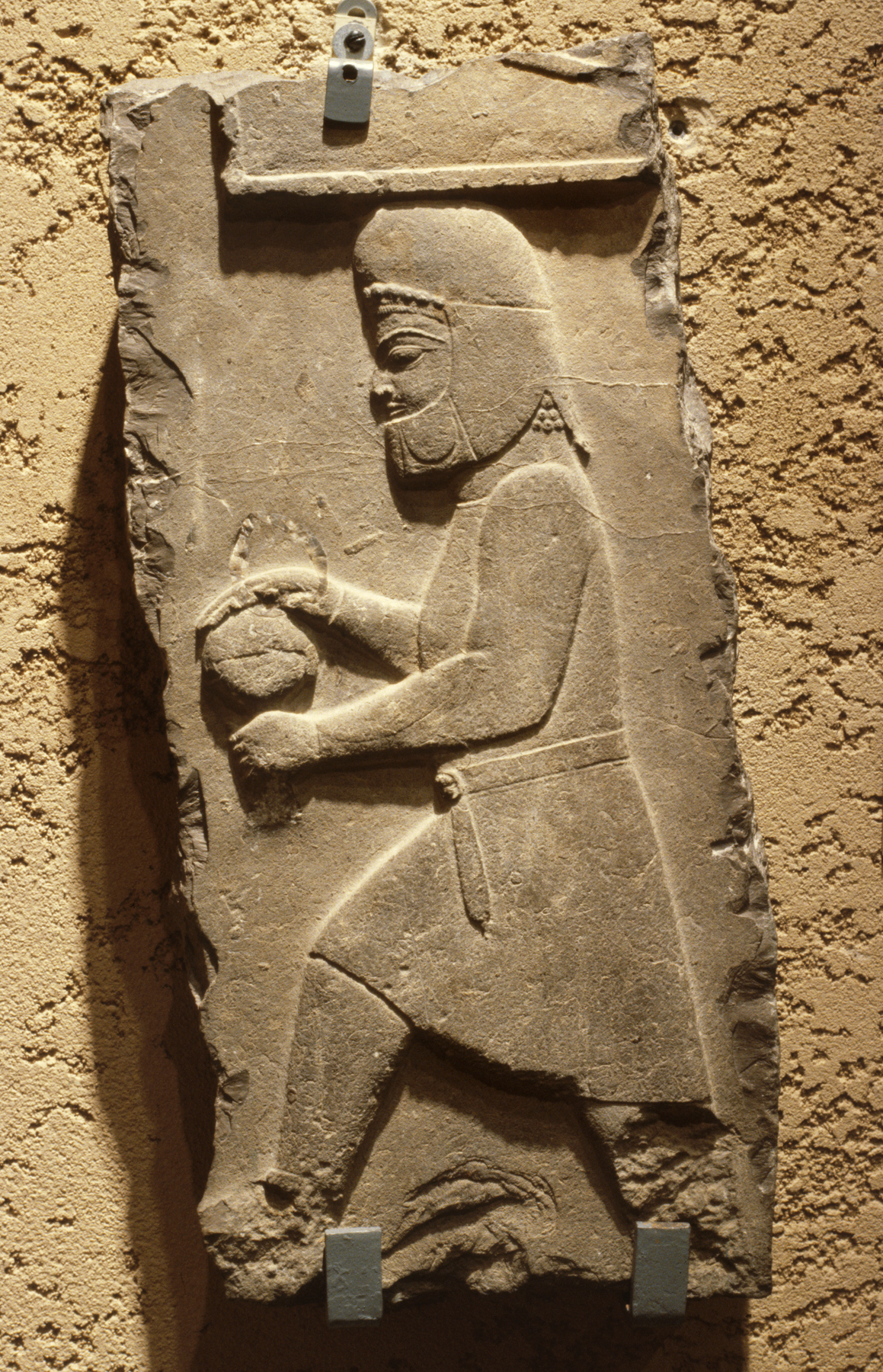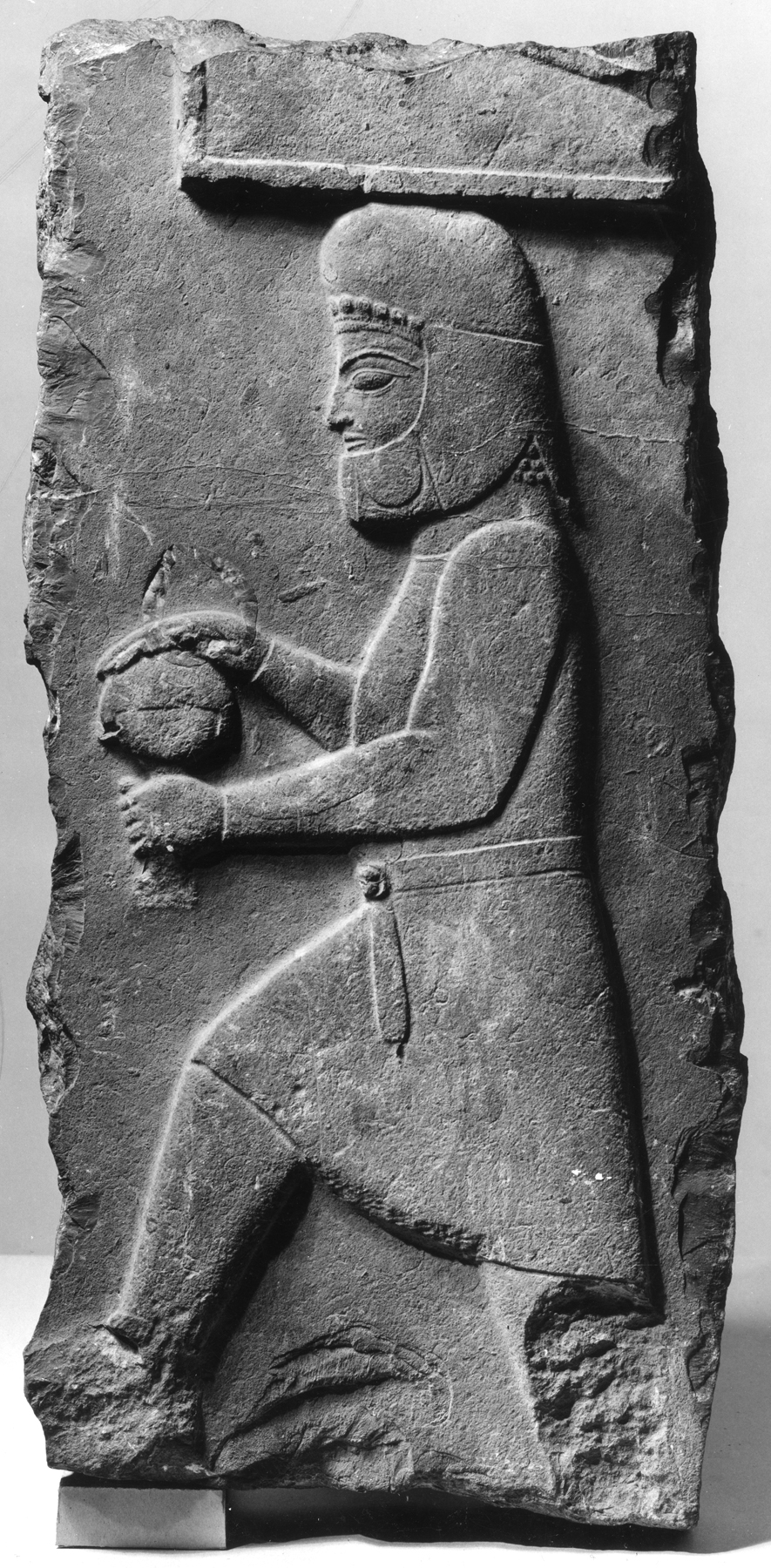Offering Bringer
(Ancient Near East )
A servant of the royal Achaemenid court at Persepolis (in present-day Iran) is shown carrying a covered vessel to the New Year's festival banquet. His clothing distinguishes him as a Mede. The Medes had dominated the Persian region until overthrown by the Achaemenids in 550 BCE. The Achaemenids became the ruling dynasty of Persia until 330 BCE, when they were defeated by Alexander the Great. This piece was probably part of a sculptural procession decorating the inner wall of the western staircase of the palace of King Darius I (reigned 521-486 BCE). The figure gives the impression of mounting the stairs beside the visitor (the figure's right foot was raised to the level of the tread of the actual stair).
Provenance
Provenance (from the French provenir, 'to come from/forth') is the chronology of the ownership, custody, or location of a historical object. Learn more about provenance at the Walters.
Raphael Stora, Paris and New York, by purchase; Walters Art Museum, 1946, by purchase.
Exhibitions
| 2008 | Faces of Ancient Arabia: The Giraud and Carolyn Foster Collection of South Arabian Art. The Walters Art Museum, Baltimore. |
| 1978 | Ancient Persia: The Art of an Empire. University Art Museum, University of Texas at Austin, Austin; The Walters Art Gallery, Baltimore. |
Measurements
28 3/4 x 13 3/4 x 4 in. (73 x 34.9 x 10.1 cm)
Credit Line
Museum purchase, 1946
Location in Museum
Accession Number
In libraries, galleries, museums, and archives, an accession number is a unique identifier assigned to each object in the collection.
In libraries, galleries, museums, and archives, an accession number is a unique identifier assigned to each object in the collection.
21.19




